Table of Contents
Introduction
The modern e-commerce landscape is fiercely competitive. Consumers expect not just high-quality products but also seamless, fast, and personalized service. Traditional customer support systems—relying on phone calls, emails, or limited human live chat—often fall short in meeting the rising demands for instant solutions.
Chatbots powered by artificial intelligence are no longer simple Q&A machines. They are conversational assistants that can interpret intent, personalize interactions, resolve queries instantly, and even anticipate customer needs.
This blog examines how AI chatbots are revolutionizing e-commerce customer service, the advantages of integrating them, their real-world applications, and best practices for businesses considering their adoption.
Why AI Chatbots are Essential for E-commerce
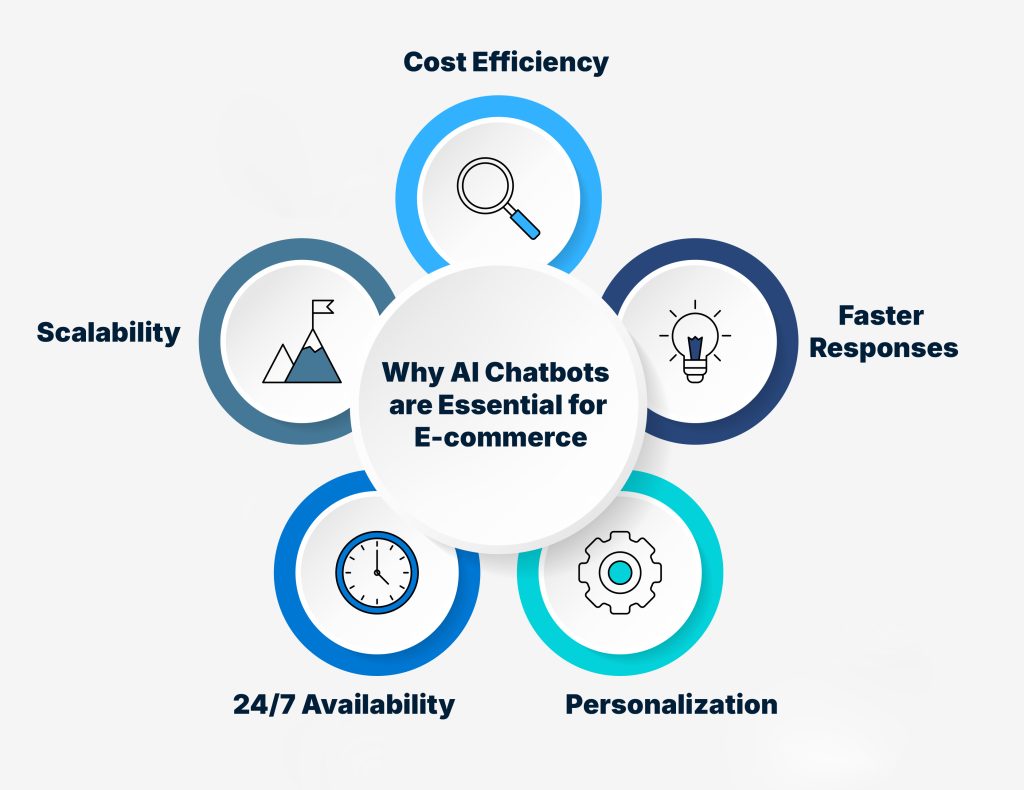
Before diving into integration strategies, it’s important to understand why AI chatbots have become indispensable in e-commerce:
- 24/7 Availability: Customers shop at all hours. AI chatbots ensure round-the-clock support without staffing limitations.
- Scalability: A chatbot can handle thousands of queries simultaneously, something impossible for human agents alone.
- Faster Responses: Modern shoppers dislike waiting. Instant answers reduce cart abandonment and improve satisfaction.
- Personalization: AI-driven chatbots use customer data to tailor recommendations, enhancing the overall shopping experience.
- Cost Efficiency: Reducing reliance on large customer service teams lowers operational costs while maintaining service quality.
Evolution of Chatbots
Initially, chatbots were rule-based: they could only respond to specific prompts or pre-set keywords. This limited scope often frustrated users. Today, with advances in natural language processing (NLP) and machine learning (ML), chatbots can understand intent, learn from interactions, and offer conversational experiences that feel human-like.
E-commerce leaders like Amazon, eBay, and Shopify stores are leveraging AI chatbots not only for customer support but also for:
- Product discovery
- Personalized promotions
- Checkout assistance
- Post-purchase tracking and returns
This shift has redefined customer service as an always-on, proactive, and personalized journey rather than a reactive process.
Key Benefits of AI Chatbots
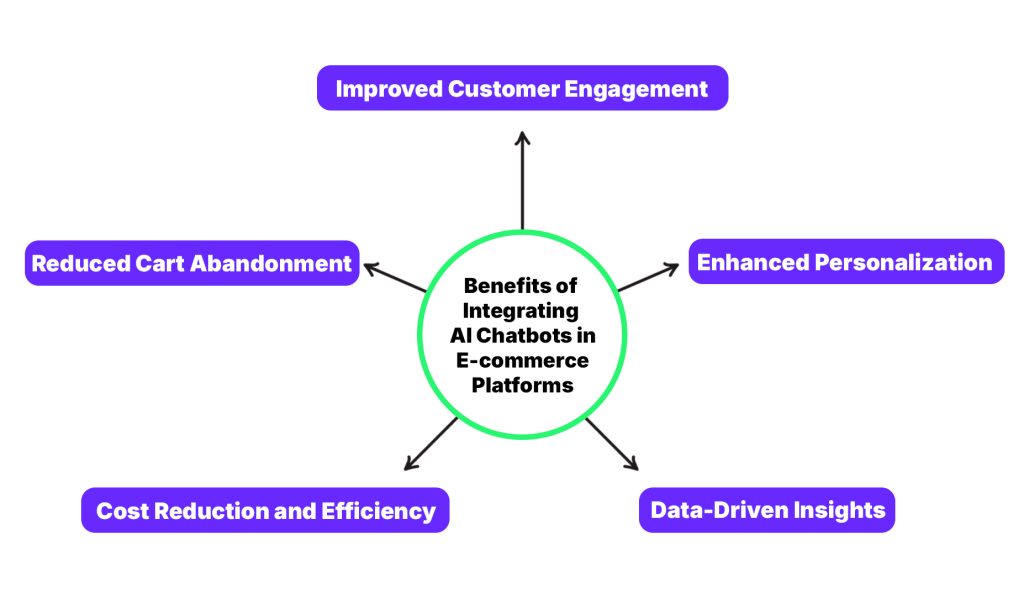
Improved Customer Engagement
AI chatbots can initiate conversations based on browsing behavior.
- For example, if a customer lingers on a product page, the chatbot can ask, “Would you like to know more about the fabric quality or size guide?”
- This keeps users engaged and reduces bounce rates.
Enhanced Personalization
Chatbots analyze purchase history, browsing patterns, and even location data to deliver personalized recommendations.
- A returning customer might be greeted with, “Welcome back! The sneakers you checked last week are now on sale.”
- Such personalization drives higher conversions.
Reduced Cart Abandonment
- According to Baymard Institute, nearly 70% of online shopping carts are abandoned.
- AI chatbots can step in with reminders, discount offers, or clarifications about shipping policies, helping recover potentially lost sales.
Cost Reduction and Efficiency
- Instead of hiring and training large support teams, businesses can rely on AI chatbots to handle routine inquiries—like order status, refund policies, or product availability—freeing up human agents for complex issues.
Data-Driven Insights
- Every chatbot interaction generates valuable customer data.
- Businesses can use this data to identify pain points, improve product descriptions, and refine marketing campaigns.
Applications of AI Chatbots in E-commerce
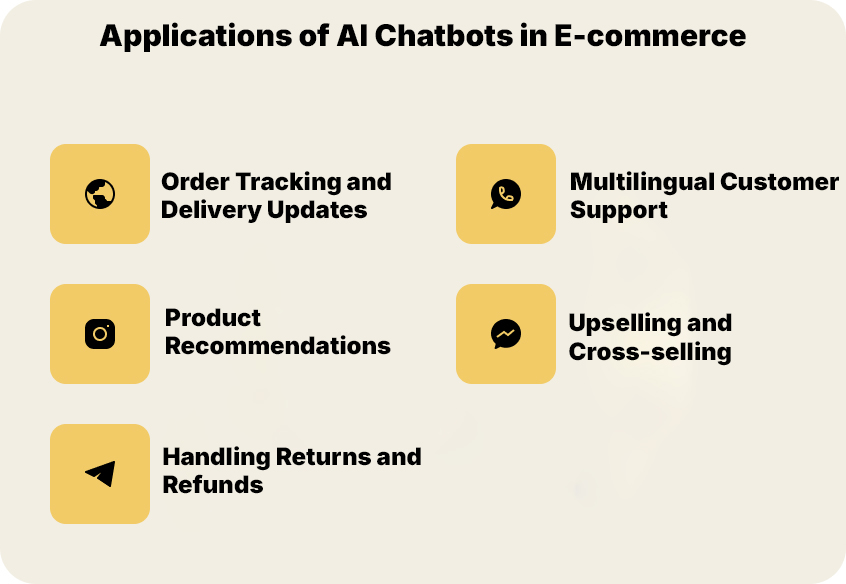
- Order Tracking and Delivery Updates: Customers frequently ask about shipping status. Instead of overwhelming human agents, AI chatbots can instantly provide order tracking updates by integrating with logistics systems.
- Product Recommendations: AI chatbots can act as personal shopping assistants. By analyzing a customer’s preferences, they suggest products that align with their interests, similar to what Amazon’s Alexa does through voice commands.
- Handling Returns and Refunds: Chatbots can guide users through return processes by generating return labels, scheduling pickups, and explaining refund timelines. This reduces friction and builds trust.
- Multilingual Customer Support: Global e-commerce platforms serve diverse markets. AI chatbots can be programmed to support multiple languages, ensuring inclusivity and expanding market reach.
- Upselling and Cross-selling: When a customer adds a phone to the cart, the chatbot can recommend accessories like cases or headphones, increasing the average order value.
Steps to Integrate AI Chatbots
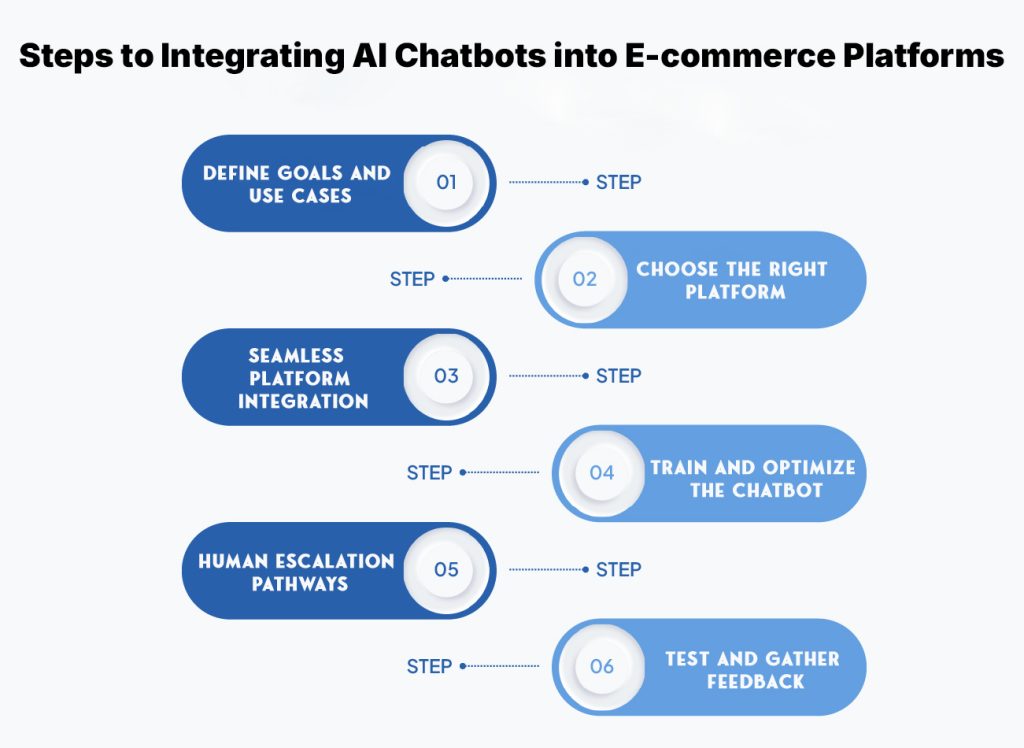
- Step 1: Define Goals and Use Cases: Before integration, businesses should define what they want the chatbot to achieve—whether it’s reducing support costs, increasing sales, or improving retention.
- Step 2: Choose the Right Platform: Several AI chatbot platforms like Dialogflow, IBM Watson, Ada, and Yellow.ai cater to e-commerce. The choice depends on factors like scalability, integration ease, and budget.
- Step 3: Train and Optimize the Chatbot: Training involves feeding the chatbot with FAQs, customer interaction histories, and NLP models. Continuous optimization ensures the chatbot learns and adapts.
- Step 4: Human Escalation Pathways: AI chatbots should never be the end of the road. When queries get complex, seamless transfer to a human agent must occur without frustrating the customer.
- Step 5: Test and Gather Feedback: Pilot testing helps identify weaknesses. Gathering feedback ensures ongoing refinement of responses and conversation flows.
Best Practices for Maximizing Chatbot Effectiveness
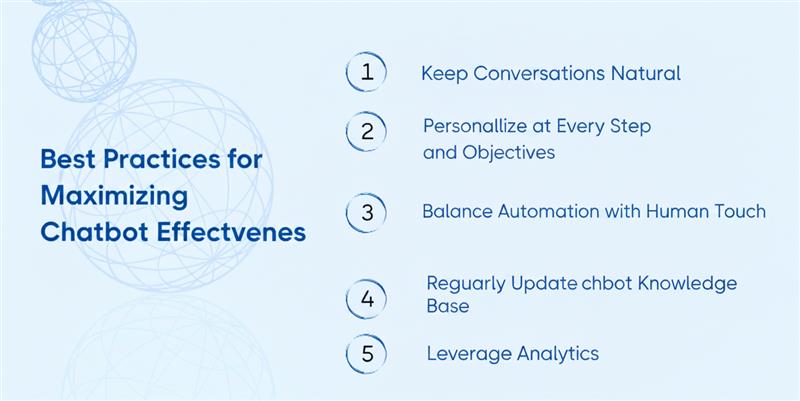
- Keep Conversations Natural: Use conversational language rather than robotic responses.
- Personalize at Every Step: Greet returning users by name and recall their purchase history.
- Balance Automation with Human Touch: Ensure customers know they can reach a human if needed.
- Regularly update the Chatbot’s Knowledge Base: Outdated responses frustrate users.
- Leverage Analytics: Use chatbot data to improve customer service and marketing strategies.
Case Studies
Sephora

Sephora has been one of the early adopters of AI-powered customer service in e-commerce. Their chatbot on Facebook Messenger provides instant beauty advice, personalized product recommendations, and even in-store booking services.
By integrating with Sephora’s product catalog and knowledge base, the chatbot helps customers discover the right products without waiting for a human agent.
eBay’s ShopBot

eBay introduced ShopBot to simplify the often overwhelming task of searching through millions of listings. By using natural language processing (NLP), ShopBot allows customers to type or even speak queries in plain language—for example, “I’m looking for a black leather jacket under $150.”
The chatbot then refines results, applies filters, and recommends products that match the criteria.
Levi’s — Virtual Stylist

Levi’s introduced a chatbot that acts as a virtual stylist, guiding customers through a personalized shopping journey. The bot asks targeted questions about fit preferences, rise options, fabric stretch levels, and wash styles, then recommends jeans across different Levi’s cuts such as the 501®, Wedgie, or Ribcage collections.
By mapping a customer’s size from other brands to Levi’s sizing, it helps remove uncertainty about fit—one of the biggest reasons for returns in apparel e-commerce.
The Future of AI Chatbots
The future of AI chatbots is moving beyond text-based interactions to voice assistants, AR-powered shopping guides, and emotion-aware AI. Soon, chatbots will:
- Recognize customer sentiment and adjust tone accordingly.
- Offer immersive shopping experiences with virtual try-ons via AR.
- Integrate deeper with IoT devices, enabling voice-activated shopping through smart speakers.
As AI continues to advance, chatbots will evolve from support tools to strategic growth enablers in e-commerce.
Conclusion
AI chatbots are no longer optional add-ons—they are essential tools for modern e-commerce platforms. By providing instant support, personalizing customer experiences, reducing operational costs, and generating valuable insights, they reshape the way businesses interact with customers.
However, successful integration requires thoughtful planning, robust technical integration, and a balance between automation and human empathy. Brands that leverage AI chatbots effectively will not only improve customer service but also secure a competitive edge in the digital marketplace.
As consumer expectations continue to rise, one thing is clear: AI chatbots are not the future of e-commerce customer service—they are the present.
Deepak Wadhwani has over 20 years experience in software/wireless technologies. He has worked with Fortune 500 companies including Intuit, ESRI, Qualcomm, Sprint, Verizon, Vodafone, Nortel, Microsoft and Oracle in over 60 countries. Deepak has worked on Internet marketing projects in San Diego, Los Angeles, Orange Country, Denver, Nashville, Kansas City, New York, San Francisco and Huntsville. Deepak has been a founder of technology Startups for one of the first Cityguides, yellow pages online and web based enterprise solutions. He is an internet marketing and technology expert & co-founder for a San Diego Internet marketing company.



